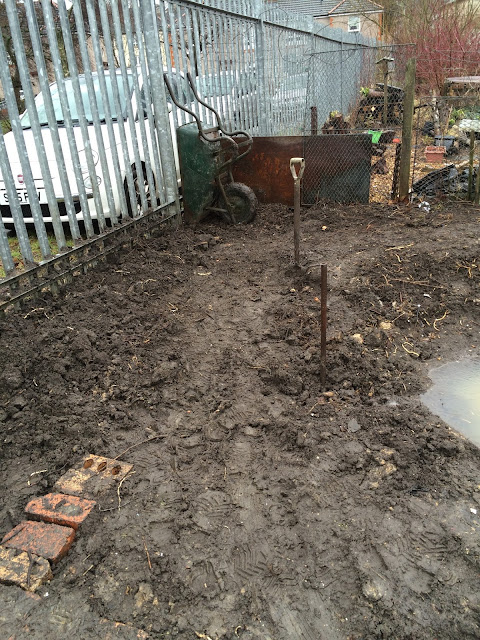The Midden

I mentioned to The Neighbour a couple of weeks ago the disgraceful nature of our mutual boundary, my former midden area, his greenhouse/potting shed. I only mentioned it because I'd have to go onto his allotment to get it clear and tidy, but, Gawd-bless-'im! he went ahead and tidied it all up and even put a nice new few fence in.You can see it there on the upper left of the photo. On the right is the increasingly big pile of rotten wood from the shed and the midden. I'm waiting for the rain to get it burnt. Also on the right is scrap iron and other rubbish for the skip. I'm blogging the rather tedious subject of a midden because I'm inordinately pleased to be getting this area cleaned up with a view to it being cultivable by the end of this growing season. The area in the middle of the photo is a thin layer of earth covering one or two courses of bricks, which themselves cover some very stony ground. The bricks I'll make into paths. The earth beneath is goin





